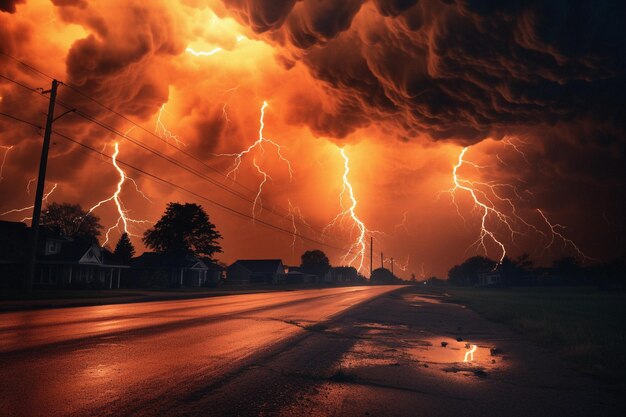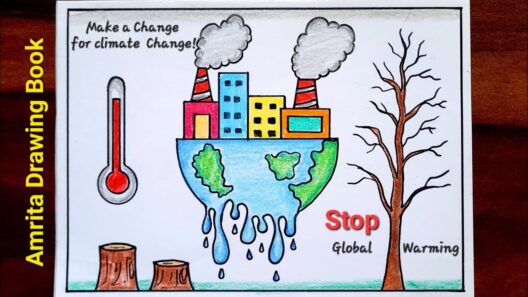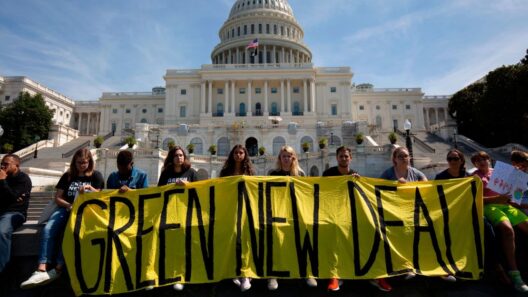As winter gives way to spring, an intriguing metamorphosis occurs, one where the chill in the air recedes, replaced by a creeping warmth that heralds change. This transition, often perceived as a blending of seasons, is more accurately described as a climatic signal—a harbinger of a much more profound alteration taking place within our atmosphere. Global warming is not merely a distant threat; it is the reality we face, and its impact on cold seasons and the prevalence of storms reveals the harsh truth of our warming planet.
The phenomenon of winter’s retreat serves as a poignant metaphor for the broader consequences of climate change. Just as frost recedes in the face of rising temperatures, so too does the reliability of winter itself. Historically, winter has been characterized by its predictable cycle; snowfall blanketed the landscape, frozen lakes welcomed skaters, and the world appeared in a crystalline hush. However, as the climate continues to warm, this picturesque scene is increasingly interrupted by erratic weather patterns—patterns that betray the very essence of winter.
One of the most alarming manifestations of global warming is the altered behavior of storms. Traditionally, winter storms—snow-laden blizzards and chill winds—defined the season, setting the stage for cozy hearthside gatherings and festive holiday celebrations. However, as temperatures rise, these storms transform into formidable forces of nature, bringing rain where there once was snow and creating a precarious balance between warmth and cold. Instead of crystalline beauty, we witness the chaos of ice storms and torrential rains, events that displace the familiar serenity of winter with the unpredictable fury of nature.
Moreover, the advent of warmer winters has fecundated the atmosphere with moisture, resulting in an increase in storm intensity. When the cold meets the warmth, the resultant turbulence can lead to unprecedented storm activities. Heavy precipitation, often falling as rain rather than snow, increases the risk of flooding, landslides, and other destructive events. The winter storm season grows more ferocious, akin to a lion that grows more powerful, yet unpredictable, as it approaches its prey. The resonance of these storms doesn’t just impact the immediate vicinity; they ripple through ecosystems, communities, and economies alike.
Furthermore, winter’s retreat fosters a disconcerting dance between ecosystems. As the length of winter shortens, species that have adapted to the seasonal rhythms find themselves in a precarious position. Cold-weather plants and animals face a dwindling habitat; migratory patterns of birds are disrupted, while hibernation cycles are thrown into disarray. This upheaval challenges biodiversity, creating a cascade of consequences throughout the food web. Species struggle to adapt, and the foundational layers of our ecosystems begin to crack and shift.
It is not just the natural world that suffers; human systems are equally vulnerable. The agriculture sector, which relies on predictable weather patterns, is forced to reckon with shifting planting seasons and the uncertainty of crop yields. Farmers find themselves battling both droughts and floods, creating a precarious situation that extends from fields to tables. Food security hangs in the balance, as the reliable rhythm of harvest shifts to a discordant tune.
While it may be tempting to envision winter only through the lens of cozy fireside scenes and holiday cheer, it is vital to acknowledge the undercurrents of a looming climate crisis. The imagery of winter must shift from idealized nostalgia to a critical reflection of what is at stake. Each snowflake that falls represents not just beauty, but the intricate tapestry of life dependent on its cold embrace. The reality is stark: as winters lose their grip, the repercussions alter not just our weather but the very fabric of our existence.
Efforts to combat climate change are more crucial than ever, demanding a united front. Solutions exist, from adopting renewable energy sources to enhancing energy efficiency, and promoting sustainable practices. Raising awareness and fostering resilience within communities are essential steps towards mitigating these impacts. In this battle for climate justice, every action matters—however small it may seem. The metaphorical snowball effect can lead to significant change when individuals come together with passion and purpose.
Innovating strategies and policies is paramount. Governments and local authorities must embark on a journey of resilience planning, creating frameworks that account for the realities of a warming world. This includes enhancing infrastructure, developing sustainable agricultural practices, and investing in research that furthers our understanding of climate dynamics. Engagement with local communities ensures that solutions are not just imposed from above, but embraced from within, allowing a collaborative approach to clarify the path forward.
Winter is not merely a season; it is a prevailing character in the drama of our climate narrative. The retreat of winter casts long shadows on our ecosystems, our agriculture, and ultimately, our humanity. The storms that now gain in intensity are both a cry for help and a call to action. Each time a snowstorm is replaced by torrential rain or relentless winds, we are reminded of what is at stake. Our choices today define our world tomorrow. If we cherish the delicate balance of seasons and the awe-inspiring power of nature, we must face the storm of climate change with unwavering resolve.








